LINE User Research
LINE conducts different types of research based on the project process. A survey is typically conducted when we want to quickly understand user attitudes toward a service, and user interviews are conducted when deeper understanding is required. Each service tracks a range of indicators, publishes reports periodically to follow user behavior trends, and analyzes the effectiveness of service improvements through data analysis before and after major updates. When a service requires changes in flow or function, usability test are used to validate the service prior to release so the appropriate improvements can be made. In addition, a variety of methodologies are applied to identify user needs according to the purpose of the user research.
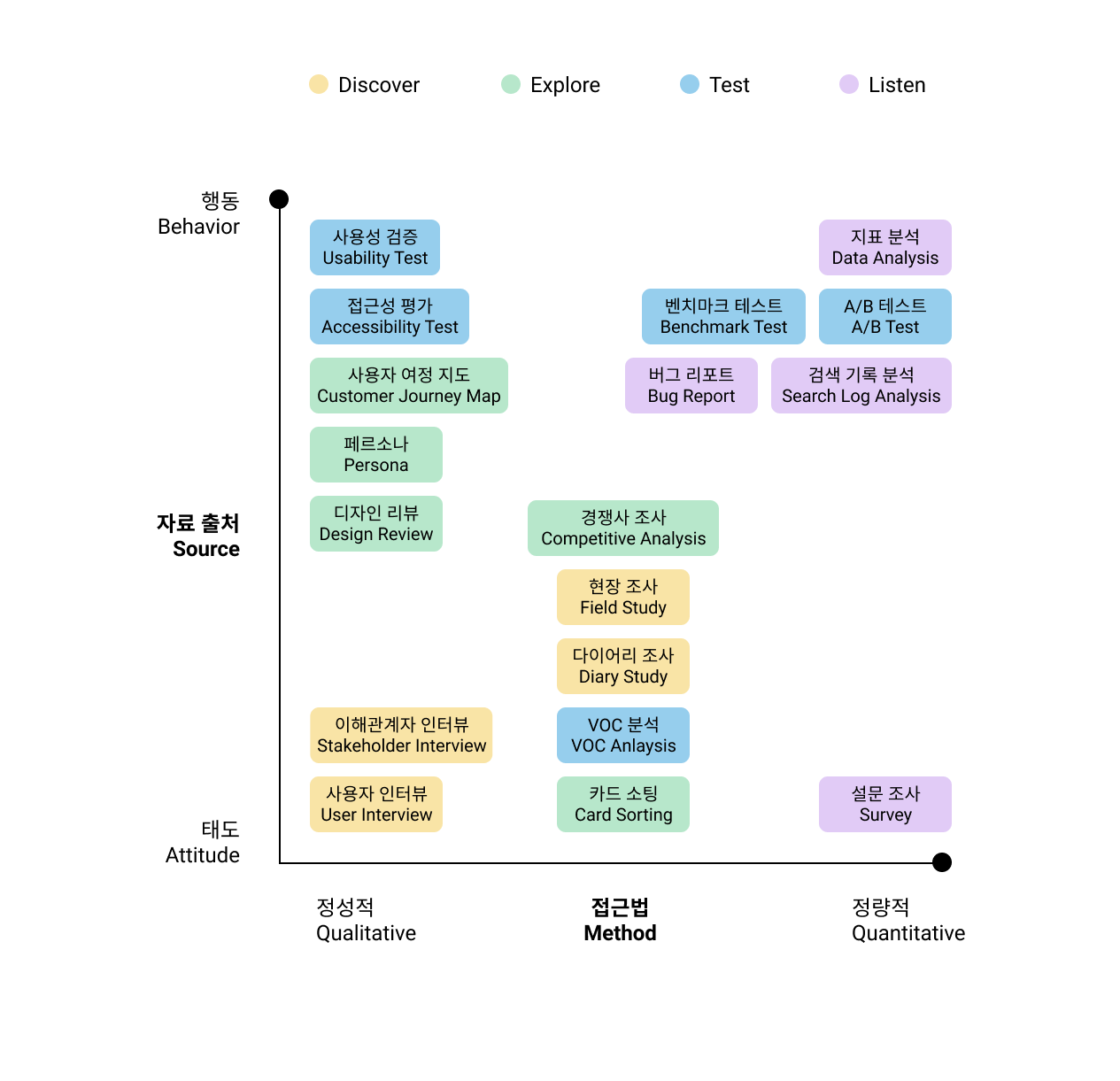
| Step | Definition | Methods |
| Discover | To understand user attitudes, needs and behaviors, and to derive user experience design possibilities | Field studies, diary studies, stakeholder interviews, user interviews |
| Explore | To process and analyze survey results, and to interpret and understand survey results | Persona, user journey map, design review, competition research, card sorting |
| Test | To develop UX strategies and concepts defined through the Discover and Explore steps, and to build actual prototypes to validate and improve usability, usability, and sensitivity | Usability validation, accessibility assessment, benchmark testing, A/B testing, VOC analysis, etc. |
| Listen | To investigate activities for post-launch effectiveness analysis and subsequent improvement challenges | Index analysis, bug reports, search history analysis, survey |
<UX Activities in the product & service design cycle by The Nielsen Norman Group>
User Research for LINE Avatar
LINE Avatar is a service that allows users to create and decorate own avatars, take pictures with various gestures, and use it on LINE profile. Although the metaverse is attracting attention, lots of LINE users are not familiar with the experience of using avatars, which are on the boundary between virtual and real. Therefore, LINE Avatar is trying to make the service easier and more diverse by conducting various surveys to see how users actually use and feel about the service.
First of all, LINE Avatar tracks indicators such as avatar creation, avatar profile settings, and avatar shooting to check user behavior trends. Then further investigations are conducted to determine the cause and improve the service based on the results. It also collects various log events to analyze the usage behavior of each component and reflect them in the design. We also conduct user interviews to identify awareness of new services or Avatar services as a whole. When the operation method or flow verification is required, a usability test is conducted by creating a high-fidelity prototype close to the actual product.
Case Study of User Research for LINE Avatar
| Avatar User Research Case 1 | Avatar User Research Case 2 | Avatar User Research Case 3 |
| Research on avatar and background tab behavior | Research on avatar service renewal | Research on new features of animal avatars |
|
Survey & Usability Test (Online) |
Usability Test (Online) |
Hybrid Usability Test using Maze (Online) |
Avatar User Research Case 1. Research on Avatar and Background Tab Behavior
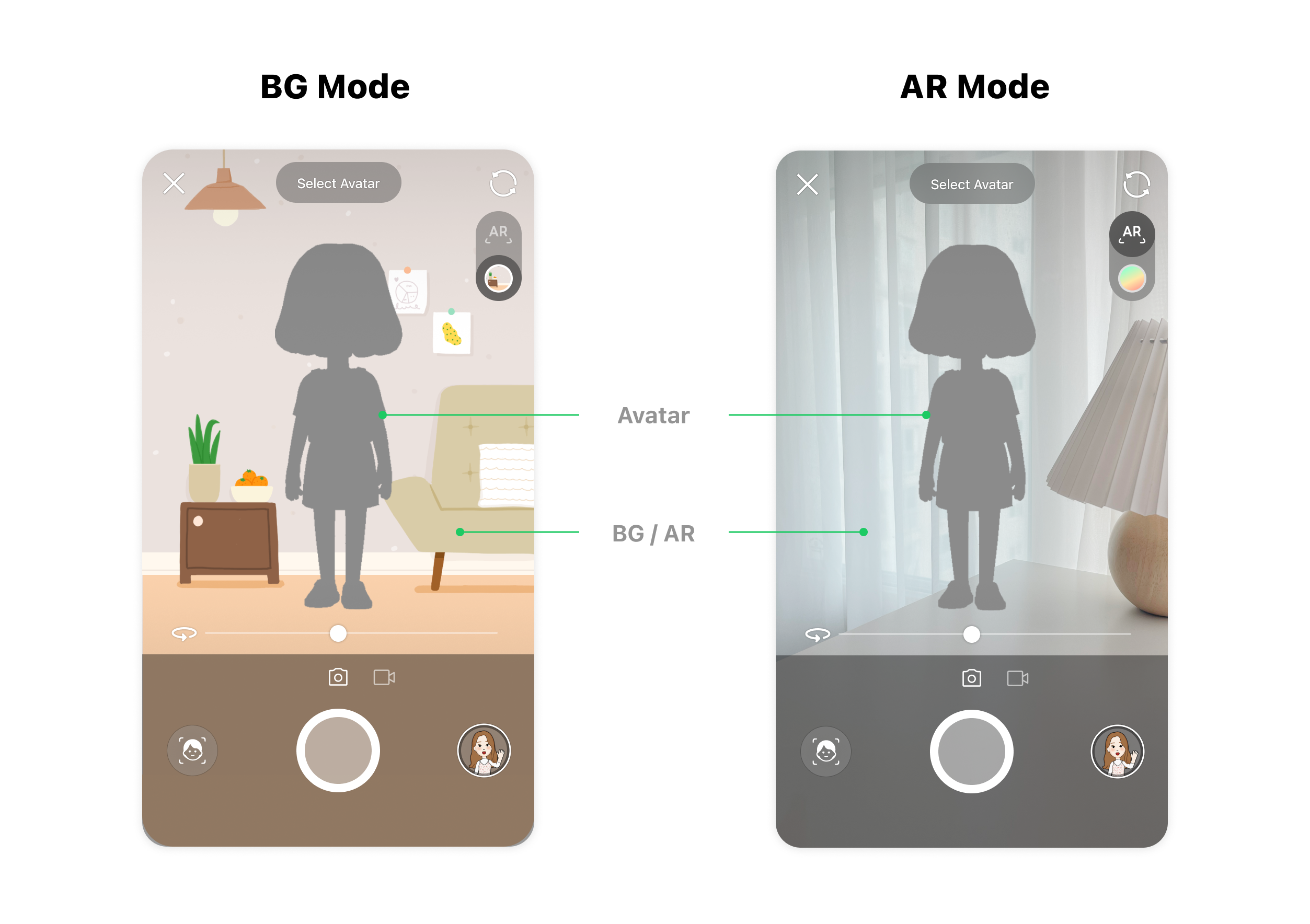
Research Background

The above images are from the Avatar BG camera and Avatar AR camera. What kind of movements do you think will continue if you tap the avatar on each screen? What kind of movements do you think will continue if you tap the background? At first glance, it seems easy to answer, but when we gathered opinions inside the project, the answers came out differently. Indeed, we concluded that we needed to investigate what behavior users expect.
Research Purpose & Method
We wanted to hear the opinions of as many people as possible about what action to expect when tapping each area. We conducted an online survey of 50 people in Japan. To collect accurate feedback, we showed a video of how it actually worked and made them respond to the preference.
We chose the survey method to get as many responses from as many users as possible, but the research structure was limited. The survey was not appropriate for asking long questions so it was written as concisely as possible. If the actions that followed when tapping the background in Avatar BG Camera and the actions that followed when tapping the background in AR Camera were different, we needed to see how the user accepted it, whether there was any problem moving the avatar, and to make up for it we conducted online UT at the same time to observe user behavior.
Result
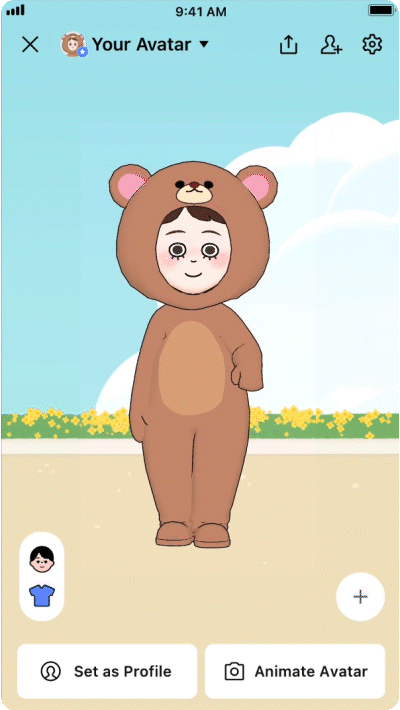 |
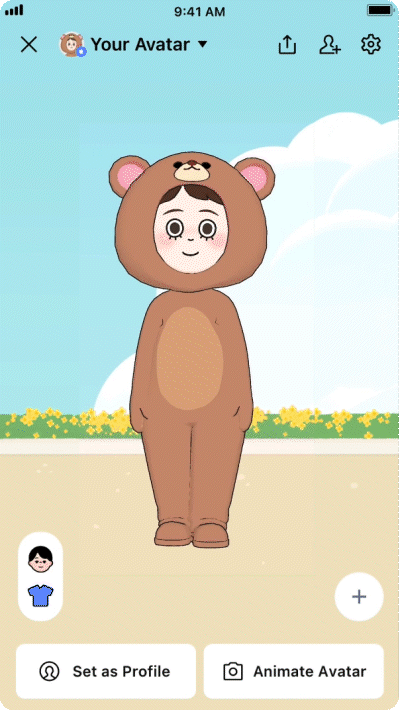 |
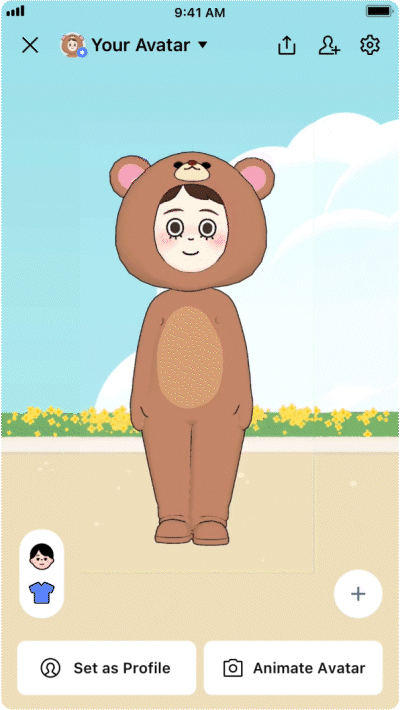 |
| When tapping the Avatar area, 76% responded that they prefer showing a gesture deck | When tapping the background, 82% responded that they prefer showing background deck | When tapping the background using AR camera, 64% responded that they prefer moving the avatar to where they tapped. |
Avatar User Research Case 2. Research on Avatar Service Renewal

Research Background
Research Purpose & Method
A prototype was created to directly observe users performing tasks, and an online UT was conducted with nine Japanese users. Since it was important to check the responses of the differences in usability, we controlled research subjects based on the ratio of users who are currently using LINE Avatar to users who left or are not using it. For research design, we used Miro, an online collaboration tool, to list the verification items and conduct ideas on priorities, hypotheses, and performance tasks. We developed several test scenarios and conducted two pilot tests to ensure that the verification points were included in the natural flow.
Result
The usability of various points such as navigating avatars, changing the background and pose of avatars, and taking a photo were verified. Important improvement points were summarized according to average usability satisfaction and task pass/fail. In addition, we were able to analyze the users' reactions and need for avatar services, and we organized future improvement ideas considering the improvement direction of LINE Avatar.
Avatar User Research Case 3. Research on New Features of Animal Avatars
![]()
Research Background
Research Purpose & Method
Since the avatar creation workflow differs for existing and new users, we divided the user/non-user groups and conducted an online UT by dividing the validation scope for the two flows, creating avatars on the main screen and the camera/photo editing screen. To focus on observing the avatar creation process, the Maze research tool introduced a task performance guide and exposed prototypes to minimize moderator intervention and allow users to explore freely. During the research, observers were able to record and communicate observations, key responses, and their thoughts on a pre-prepared Miro board. The advantage of this research method was that researchers could understand the usability evaluation results more objectively, and all project members could observe and record the research results in real time.
Result
We used Maze's result report to analyze as quickly as possible, and to develop discussions and decisions for improvements. Using Miro, we presented an improvement discussion agenda, usability evaluation design, Maze results, voting options, and conducted workshops to help project members make final decisions about what, when, and how to improve effectively.
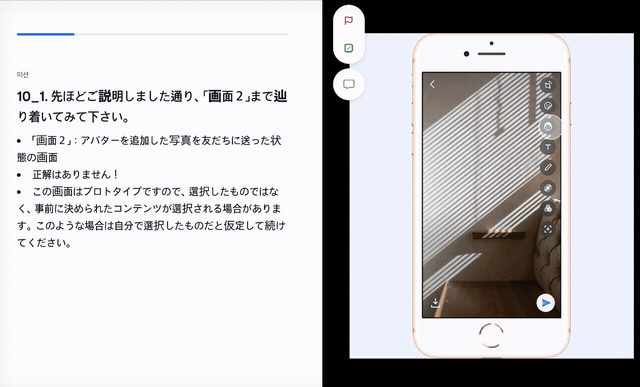
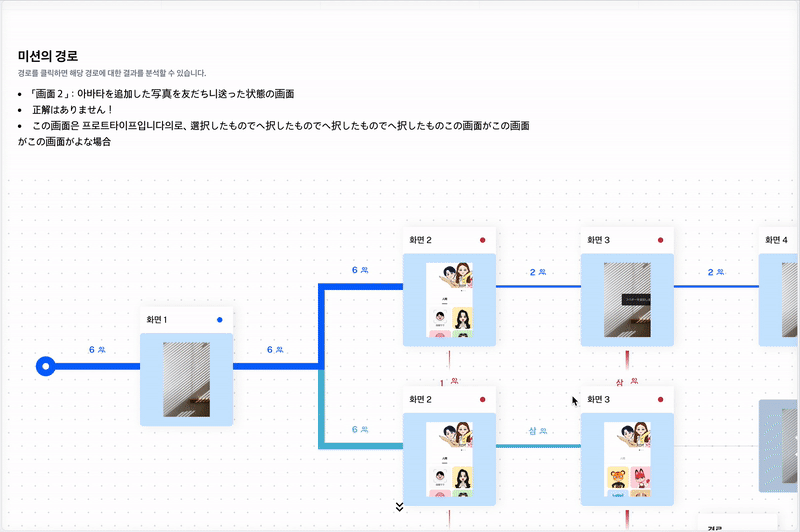
Maze is a tool that can be used for remote usability verification, allowing users to present prototypes and collect responses in the same way as a survey. We could work with Figma to provide prototypes, gather opinions before and after performing tasks, and view heat maps and quantitative analysis reports in real time.
What's the Future of User Research?
Going forward, we plan on asking more questions to users, and laying the groundwork to create user-centered services. We have developed a local user panel in Japan to quickly conduct research on real users when needed, and have improved the process so that user recruitment can be completed within a week of the research request. We are building the infrastructure to efficiently conduct research and introducing usability evaluation tools such as Maze. Although COVID-19 has made field research and end-user research difficult, we hope that the situation will improve soon and so we can meet more users in-depth and pursue Users Rule.